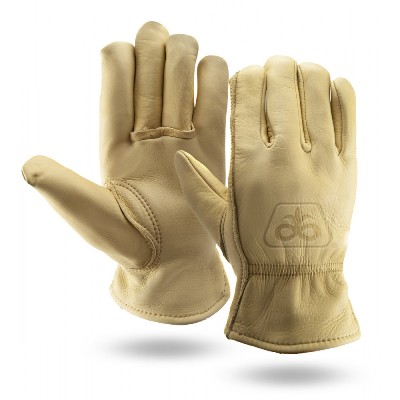Cowboy Gloves

Cowhide leather is one of the most commonly used leathers in gloves because it’s easy to find, durable and affordable. It also offers excellent abrasion resistance and heat protection.
Goat-skin is another great option, as it’s both tough and thin enough to offer excellent dexterity. It also offers good water-resistance and a soft feel that works well for grippy surfaces.
Aesthetics
Whether you are going for a cowboy look or want to be more fashion conscious, there are many ways to make cowboy gloves your own. They come in a variety of styles and colors, and there are even knit ones that will keep your hands warm!
Leather is one of the best materials to choose for cowboy work gloves. This material provides abrasion resistance, and it also repels water and dirt well.
Another property that makes cowhide a superior choice for work gloves is its warmth. The material also helps shield your hands from rope burns, blisters, and barbed wire.
Goatskin is also a popular option for cowboy gloves, as it is less expensive than cowhide. It has a coarse grain, though better grades can be closer to cow quality. Lastly, goatskin is also able to be split and shaved down to a lighter weight than cowhide. This allows for a more dexterous and close fit.
Durability
Whether it’s herding cattle, roping bulls, or simply handling tools, cowboys need a pair of gloves that can withstand constant use and wear. The leather used in the gloves plays a huge role in how long they last.
The best leather for a cowboy glove is typically cowhide. It’s thick, durable, and abrasion resistant.
Another type of leather that is commonly used in work gloves is goatskin. It costs about 25% less than cowhide, and it can be split to a lighter weight.
The texture of the goatskin is very similar to cowhide, but it also has a slightly rougher appearance, which gives it extra grip when you need it most. This makes it a great choice for a variety of hand-held tasks, including cutting wood or using clay pots.
Abrasion resistance
The abrasion resistance of a leather glove is one of the most important factors in choosing a pair. It can determine whether or not the gloves will last longer than others and protect your hands from painful contact with hard surfaces.
Leather varies in abrasion resistance depending on the grain or split of the leather used to make the gloves. Some types of cow, goat, and sheep leather are stronger, suppler, and lighter than others.
Goat-skin leather is often considered the strongest type of leather for gloves, and it’s also thin enough to provide excellent dexterity. It also tends to be more water-resistant than other types of leather.
Gloves made from abrasion-resistant leather are ideal for jobs where you’ll be rubbing or dragging your hands through dirt, mud, and water. They can also help to keep your hands warm during cold weather. They’re also good for preventing cuts and scrapes. Some work gloves have a micro-foam coating to increase grip in wet conditions.
Comfort
Cowboys have a strong and proud tradition of wearing chaps, sturdy boots, and leather gloves. They wear their leather gear not just to show off, but also because they need them to protect their hands from rope burns, blisters, and barbed wire.
The leather material is thick, durable, and abrasion-resistant. This makes it ideal for heavy-duty tasks, like repairing fences or handling cattle drives.
Moreover, the leather is heat-resistant and repels water well. This feature is especially important for cowboys, as their job requires a lot of mud and dirt work. The price of cowhide is also reasonable, making it a great choice for budget-conscious consumers. It also can withstand a lot of abuse, so it can last for a long time even with frequent and hard use.